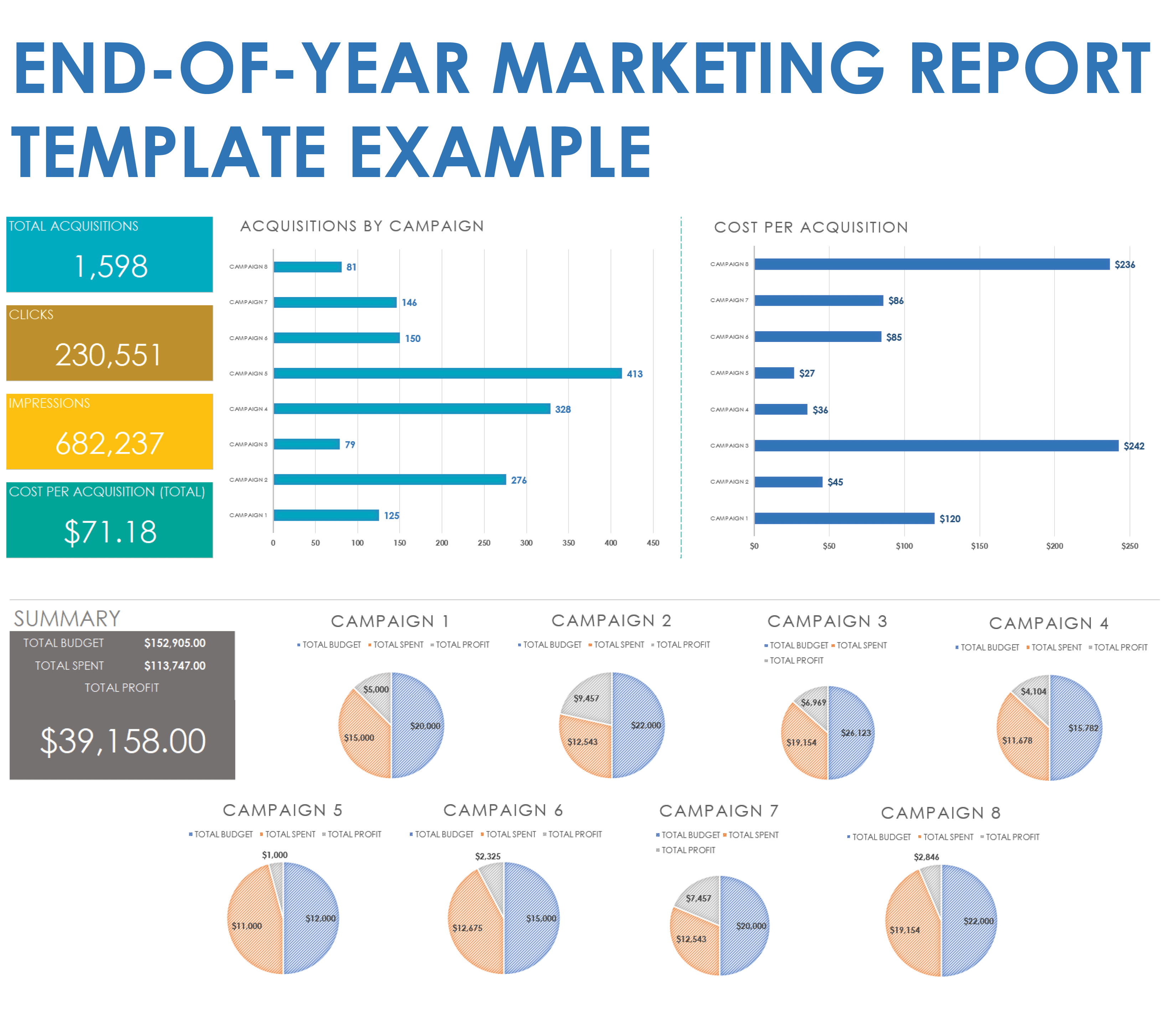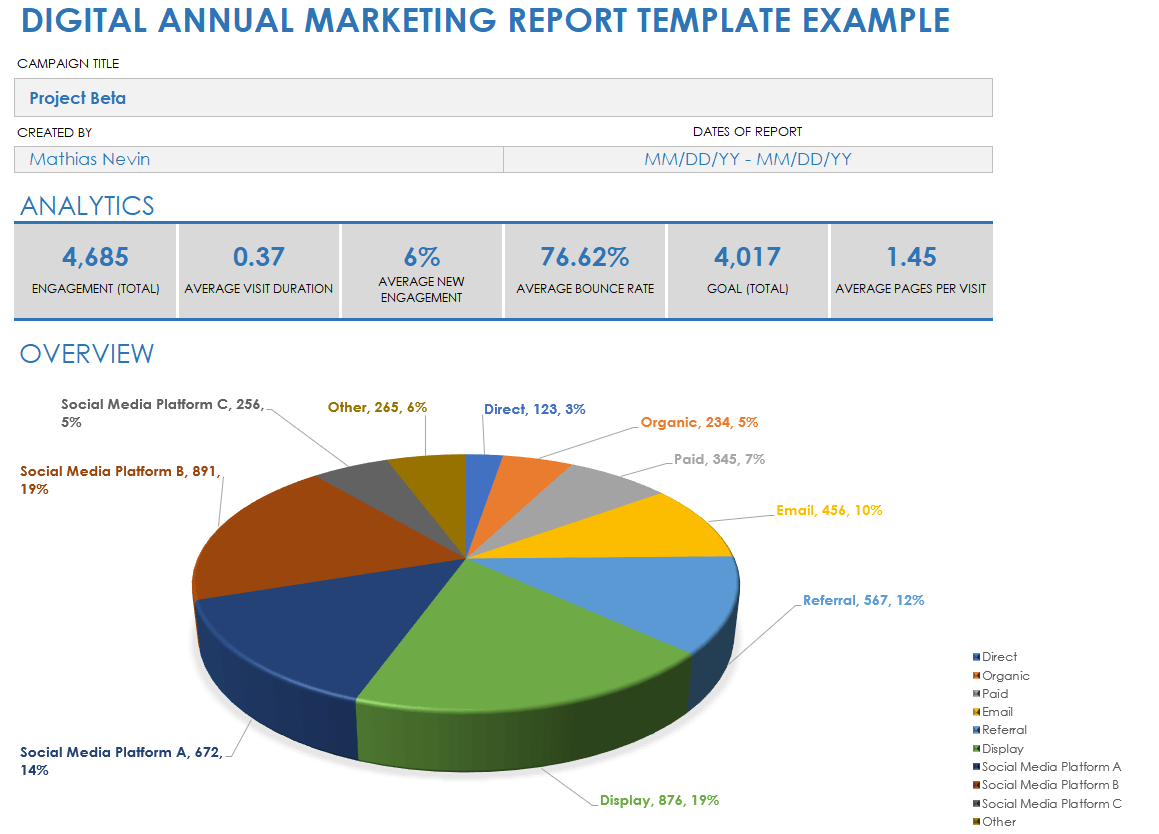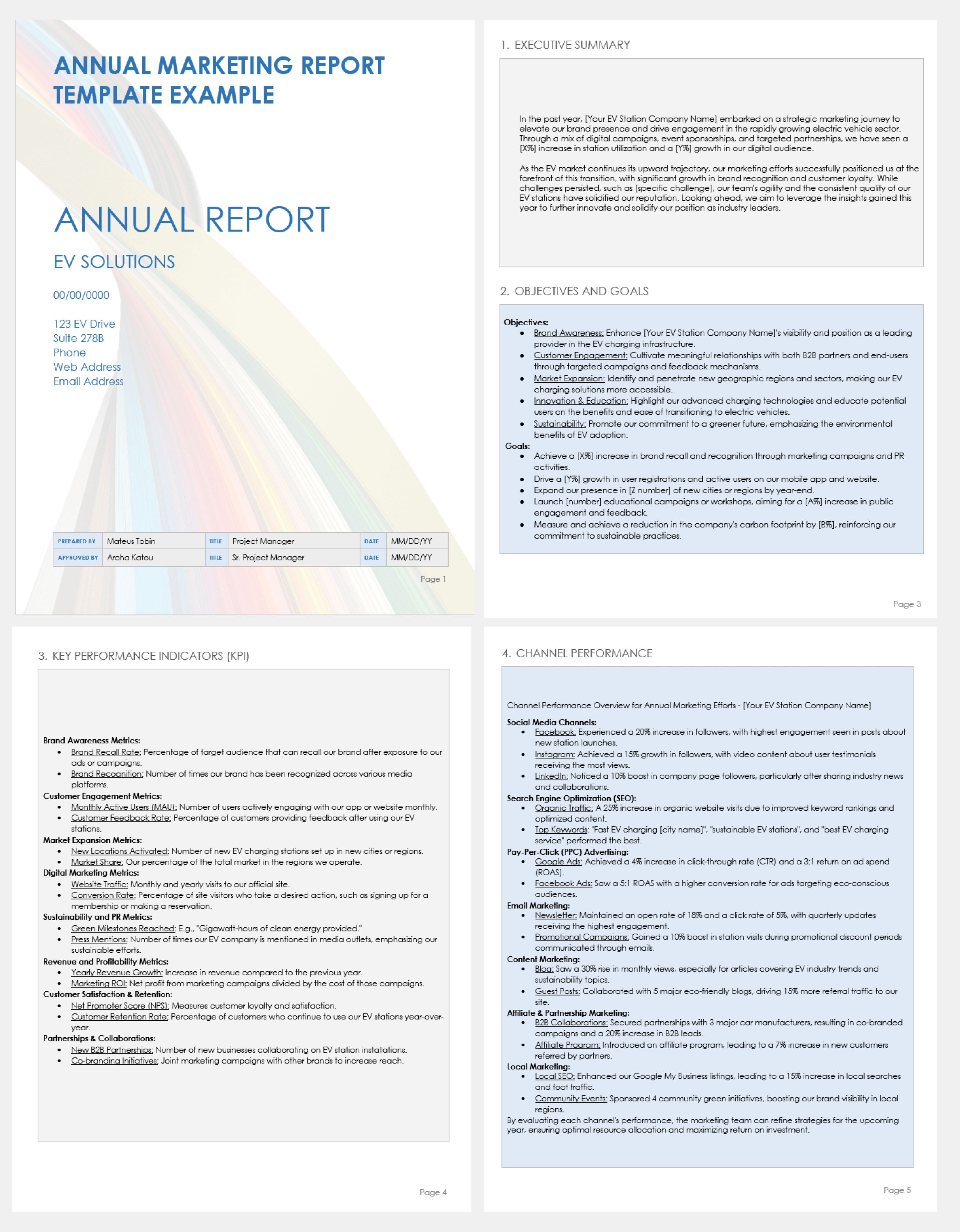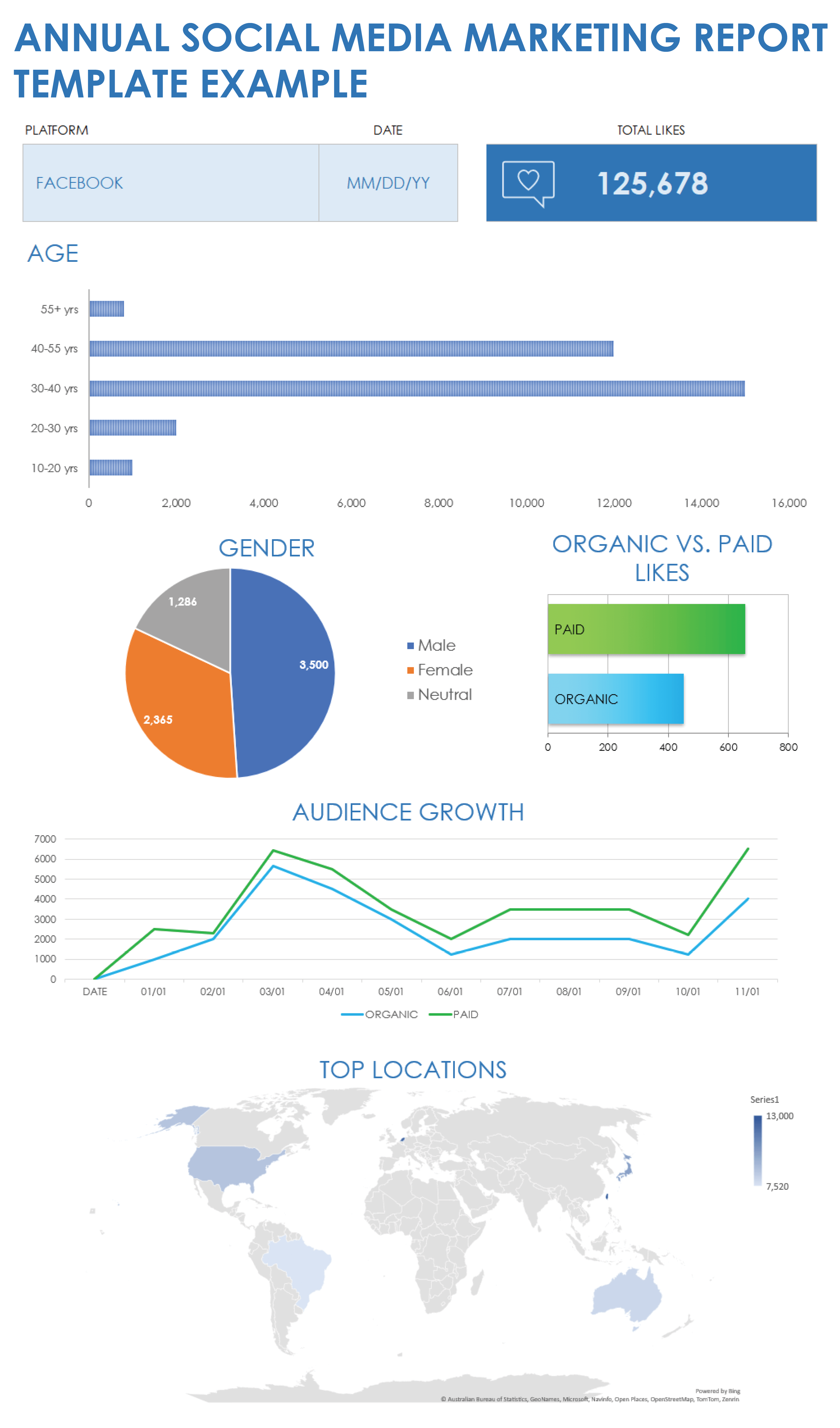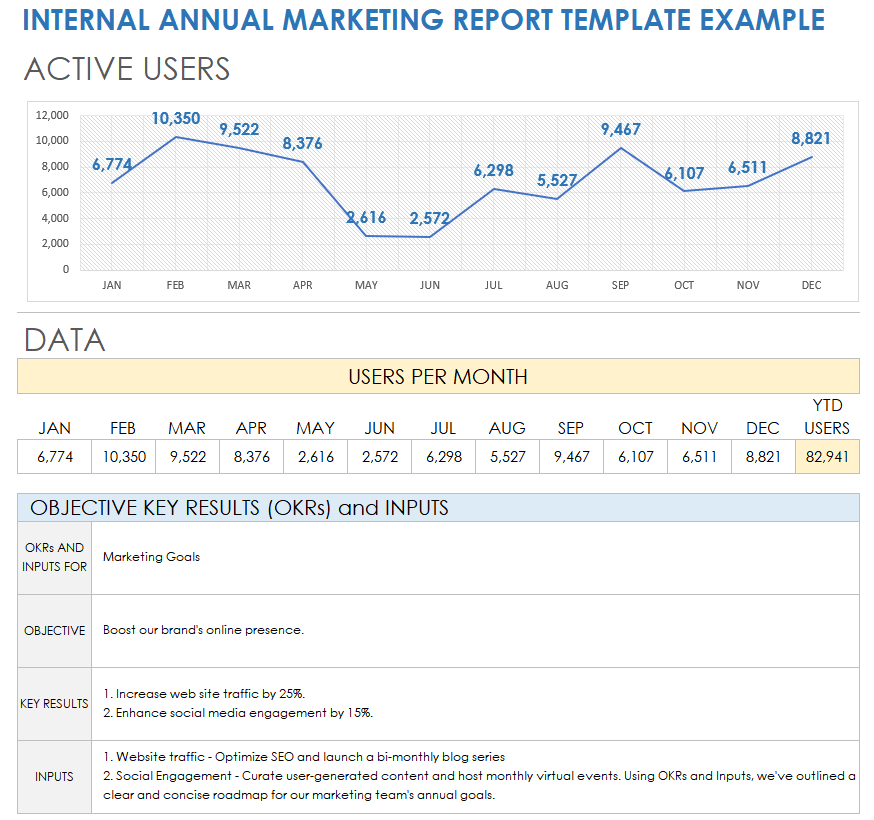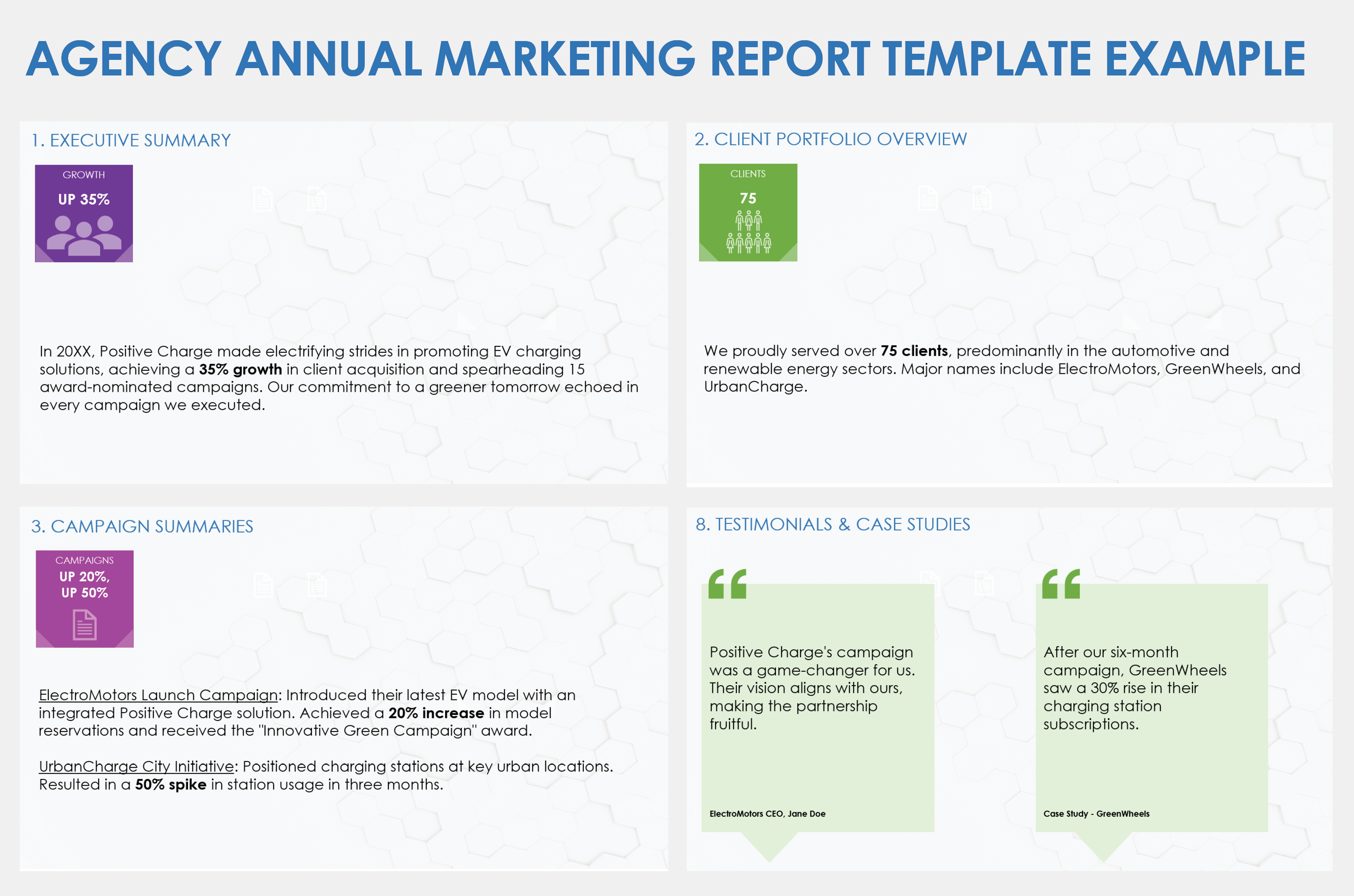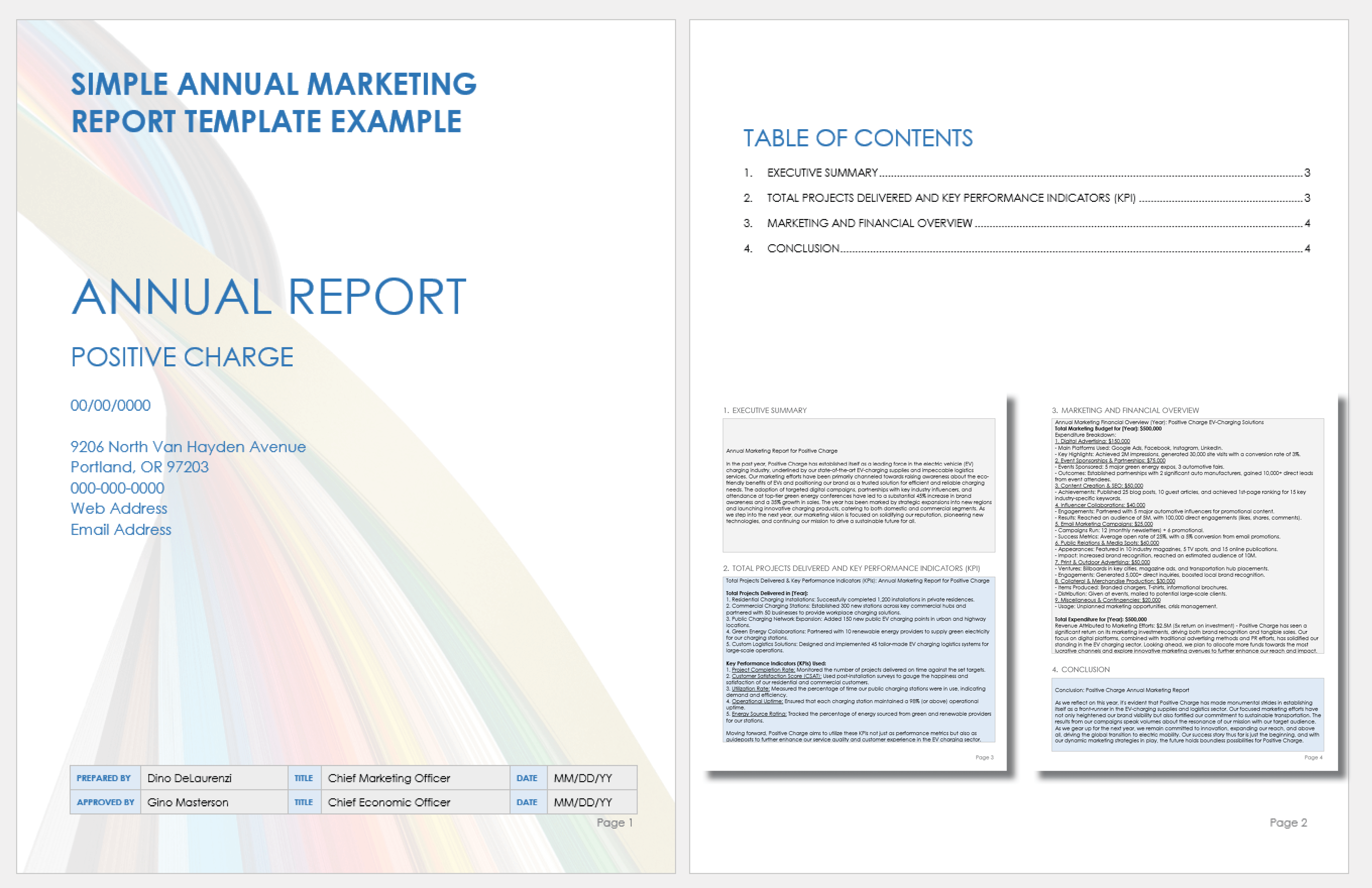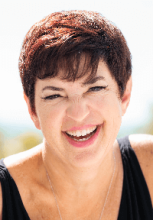End-of-Year Marketing Report Template
Download a Sample End-of-Year Marketing Report Template for
Excel
|
PowerPoint
| Google Sheets
Download a Blank End-of-Year Marketing Report Template for
Excel
|
PowerPoint
| Google Sheets
Use this visually rich end-of-year (EOY) marketing report template with or without sample data to provide stakeholders with visual clarity and a streamlined overview of a campaign’s annual outcomes. To utilize the template, gather data from your marketing platforms — such as marketing campaign expenditures, impressions, clicks, total acquisitions, cost per acquisition (CPA), and profit per campaign — and populate the charts. This tool aids your marketing team in quickly assessing performance, optimizing budget allocation, and refining future strategies.
For more resources to consistently track, analyze, and present marketing performance data, see this article with free marketing report templates.
Digital Annual Marketing Report Template
Download a Sample Digital Annual Marketing Report Template for
Excel
| Google Sheets
Download a Blank Digital Annual Marketing Report Template for
Excel
| Google Sheets
This dashboard-style digital annual marketing report template, available with or without sample data, provides an immediate visual snapshot of key digital metrics. Input data from your analytics platforms regularly to ensure up-to-date reflections of your digital performance. This tool empowers your marketing team to swiftly identify trends, gauge channel effectiveness, and fine-tune strategies for better audience engagement and goal achievement.
For monthly resources for accurately reporting marketing metrics, check out our article on free monthly marketing report templates.
Annual Marketing Report Example Template
Download an Annual Marketing Report Example Template for
Microsoft Word
|
Adobe PDF
|
PowerPoint
Download a Blank Annual Marketing Report Template for
Microsoft Word
|
Adobe PDF
|
PowerPoint
Use this comprehensive annual marketing report example template, available with or without sample data, to present a holistic review of the year's marketing efforts, encapsulating every critical aspect, from strategy to outcomes. Simply populate each section with relevant data and insights gleaned from your analytics tools and market research. This presentation format aids your marketing team in drawing informed conclusions, celebrating successes, and addressing shortcomings.
Annual Social Media Marketing Report Template
Download a Sample Annual Social Media Annual Marketing Report Template for
Excel
| Google Sheets
Download a Blank Annual Social Media Annual Marketing Report Template for
Excel
| Google Sheets
This visually dynamic annual social media marketing report template, available with or without sample data, offers an engaging, quick overview of key audience metrics. Extract data from your social media platforms' analytics sections, and input it in the respective metrics fields in the template; it will auto-populate the included charts. This focused template enables your marketing team to pinpoint demographic strengths, optimize ad spend, and tailor content to resonate more effectively with the target audience, thus guiding future strategies.
For related tools, see this collection of free marketing dashboard templates that provide compelling interfaces for real-time tracking and analysis of key marketing metrics.
Internal Annual Marketing Report Template
Download a Sample Internal Annual Marketing Report Template for
Excel
| Google Sheets
Download a Blank Internal Annual Marketing Report Template for
Excel
| Google Sheets
Use this internal annual marketing report template, available with or without sample data, to effectively align your marketing team and easily track objectives and key results (OKRs). This template provides a structured approach that focuses on user engagement and key stages of the customer journey. Easily evaluate the efficacy of acquisition, conversion, and retention strategies, and recalibrate efforts for improved outcomes in the subsequent year.
Check out this article on free year-end reporting resources with templates for tools to provide key information on your organization’s year-end performance.
PowerPoint Agency Annual Marketing Report Template
Download the Sample Agency Annual Marketing Report Template for PowerPoint
Download the Blank Agency Annual Marketing Report Template for PowerPoint
Use this visually compelling agency annual marketing report template with or without sample data to present your agency’s annual client performance and agency operations. Populate the dashboard with data sourced from client campaigns, agency financial records, and ongoing market research. This consolidated approach empowers your marketing team to provide transparent client updates, fine-tune campaign strategies, and anticipate industry shifts.
Simple Annual Marketing Report Template
Download a Sample Simple Annual Marketing Report Template for
Microsoft Word
|
Adobe PDF
|
PowerPoint
Download a Blank Simple Annual Marketing Report Template for
Microsoft Word
|
Adobe PDF
|
PowerPoint
Provide stakeholders with a clear and concise presentation of overarching annual marketing strategies and performance metrics with this simple annual marketing report template available with and without sample data. The template’s framework equips your marketing team with a streamlined tool to assess marketing progress, align strategies, and communicate effectively with stakeholders. The sample-text version of this template provides a dynamic example of how an organization should report its annual marketing endeavors.
What to Include in an Annual Marketing Report
An annual marketing report includes an executive summary, marketing objectives, goals, and key performance indicators. You can add campaign summaries, budget overview, channel performance analysis, customer insights, market and competitor analysis, and lessons learned. Conclude with recommendations for future strategies.
An annual marketing report provides an overview of a company's marketing activities and their outcomes over a year. It serves as both a retrospective analysis and a forward-looking tool. Here's what you should include:
- Executive Summary: A brief overview offering stakeholders a quick grasp of the report's highlights and main findings.
- Objectives and Goals: A recap of the year's marketing goals helps assess alignment with broader business targets and measure the year's successes.
- Key Performance Indicators (KPIs): Metrics such as website traffic, conversion rates, and lead generation provide quantifiable insights into marketing activities' effectiveness.
- Campaign Summaries: Provide detailed overviews of specific campaigns, including objectives, strategies, and outcomes.
- Budget Overview: A breakdown of the marketing budget and spending shows financial allocation, informs return on investment (ROI) calculations, and guides future budgeting.
- Channel Performance: This analysis of different marketing channels, such as email or social media, helps identify the most productive avenues and opportunities for optimization.
- Customer Insights and Feedback: Share information from surveys or reviews to offer valuable insights into customer sentiment and highlight areas of improvement.
- Market Trends and Analysis: Observing broader market dynamics helps ensure the company remains competitive and can adapt to evolving customer needs.
- Competitor Analysis: Including details about competitors' strategies aids in differentiation and reveals potential market gaps.
- Challenges and Lessons Learned: Reflecting on obstacles and the resulting insights promotes continuous growth and innovation.
- Recommendations and Future Outlook: Adding suggestions based on past data and anticipated trends set a clear direction for upcoming marketing strategies.
How to Create an Annual Marketing Report
To create an annual marketing report, start with a template. Gather and segment the year's marketing data by channels and campaigns, then analyze key performance indicators. Focus on achievements and areas of improvement. Include actionable insights for upcoming strategies.
Creating an annual marketing report involves compiling, analyzing, and presenting a year's worth of marketing data. Marketers and stakeholders use the report to assess performance, learn from outcomes, and plan for the future. Here's a step-by-step guide for creating a successful annual marketing report:
- Set Clear Objectives: Determine the primary goals your report aims to address.
- Gather All Data: Compile metrics from every marketing campaign and initiative over the year, including website metrics, social metrics, and email results.
- Segment the Data: Organize your data by channel, campaign, month, or quarter to detect trends and patterns.
- Highlight Key KPIs: Choose the most relevant metrics, such as website traffic, conversion rates, and customer acquisition costs, and then align them with the campaign’s initial goals.
- Use a Template: This end-of-year marketing report template with sample data provides a framework to efficiently summarize annual marketing performance. The template includes space to measure a campaign’s individual and total budgets, impressions, clicks, acquisitions, and more. You can also use it to identify areas for improvement and strategize for future campaigns based on data-driven insights.
- Customize the Chosen Template to Serve Your Purposes: You can customize a template to reflect your brand. You can also add or remove data points. For example, a digital marketing manager might want to use an annual marketing report template to assess metrics such as conversion rates, click-through rates, ROI on different channels, lead generation, and customer acquisition costs. A brand manager, on the other hand, might want to measure brand-related metrics, such as brand awareness, brand equity, market share, customer satisfaction, and sentiment analysis.
- Summarize Everything: Begin your report with a concise summary of the main findings and recommendations.
- Visualize Your Findings: Enter the data you gathered in the appropriate area on a template to automatically create charts, graphs, and infographics to display a digestible view of complex data points.
- Provide Context: Describe the strategies employed, and discuss the successes, failures, and potential external influencers.
- Detail Your Budget: Outline how you allocated and spent the marketing budget, and assess the ROI of major costs.
- Analyze Competitors: Compare your performance against top competitors or industry benchmarks.
- Reflect on Lessons Learned: Pinpoint successful strategies, acknowledge mistakes, and discuss the reasons behind them.
- Propose Future Strategies: Based on your analysis, suggest tactics and approaches for the upcoming year.
- Seek Feedback: Share a draft with colleagues or stakeholders to get fresh perspectives and refine your findings.
- Present Your Report: Prepare to showcase your report's key insights, answer questions, and defend your analyses to management and key stakeholders.
The goal of an annual marketing report isn't only to recap the past year, but to use its insights to improve future marketing strategies and tactics. By following these steps and emphasizing actionable insights, your annual marketing report will serve as a valuable tool for strategic planning and performance improvement.
Best Practices for Annual Marketing Reports
Annual marketing report best practices include presenting a concise executive summary and clear visualization of data. Align findings with business objectives, and include a comprehensive review of all marketing channels. Use insights from customer feedback, competitor analysis, and actionable recommendations.
“An annual marketing report is one of the most straightforward assets produced by marketing,” says Cari Jaquet, Chief Marketing Officer for CoreView. “The theme and strategic content are created from top-down goals that were laid out at the beginning of the year. The supporting financial / operational content usually comes from the RevOps team … so what remains is the format of the piece.”
Here’s a list of best practices to keep in mind when creating an effective annual marketing report:
- Acknowledge Achievements and Shortfalls: Celebrate major successes, but also transparently address goals that weren't met. This holistic view showcases authenticity and paves the way for improvement.
- Be Concise Yet Comprehensive: While capturing the entire year's data, ensure the report remains succinct. Use appendices for additional information if necessary.
- Create a Targeted Presentation: Design the report keeping the primary audience in mind. Senior executives might prefer high-level summaries, while the marketing team might appreciate detailed breakdowns.
- Deliver Actionable Insights: Conclude with lessons learned from the year's data and provide strategic recommendations for the upcoming year.
- Encourage Feedback: Solicit input on the report's utility and clarity, refining your approach for subsequent years based on this feedback.
- Establish Clear Objectives: Determine the main goals of your annual report, whether to evaluate the year's performance, set directions for the next year, or both.
- Highlight Key Metrics: Prioritize the most vital annual KPIs that reflect the year's objectives and outcomes. “Consider how to best tell the story and what data is needed to do that,” advises Jaquet.
- Incorporate Visual Aids: Use graphs and charts to depict year-long trends, growth metrics, and key achievements. They break up text and help readers quickly grasp important points.
- Maintain Consistency: If you've been producing annual reports in the past, stick to a familiar format. This consistency aids in year-over-year comparisons and sets expectations for stakeholders.
“Leveraging templates helps guide the structure of an annual marketing report, how to best tell the story and what data is needed to do that. I usually start looking through templates mid-year with my team to get our heads around how it will come together,” shares Jaquet. - Provide Context: Compare the results to previous years or industry benchmarks. This context helps stakeholders understand the significance of the data presented.
- Segment Yearly Data: Organize data by quarters, campaigns, or marketing channels. It helps in observing patterns and performance peaks or troughs over the year.
- Stay Current with Trends: Highlight how the year's marketing strategies adapted to or anticipated industry shifts. This underscores your brand's agility and forward-thinking approach.
Why End-of-Year Marketing Reports Are Important
Annual marketing reports are important because they provide a comprehensive review of the year's marketing activities. They offer insights for strategic planning, validate ROI to stakeholders, and identify areas for improvement, contributing to informed decisions for future marketing endeavors.
Beyond the numbers, the report also encapsulates insights on market trends, competitive landscapes, and audience behavior. This knowledge is valuable in refining strategies, optimizing budgets, and fortifying a brand's market position. An annual marketing report isn't simply a reflection of the past but a pivotal tool for proactive decision-making and future growth.
Easily Track Annual Marketing Report Data in Smartsheet
The best marketing teams know the importance of effective campaign management, consistent creative operations, and powerful event logistics -- and Smartsheet helps you deliver on all three so you can be more effective and achieve more.
The Smartsheet platform makes it easy to plan, capture, manage, and report on work from anywhere, helping your team be more effective and get more done. Report on key metrics and get real-time visibility into work as it happens with roll-up reports, dashboards, and automated workflows built to keep your team connected and informed.
When teams have clarity into the work getting done, there’s no telling how much more they can accomplish in the same amount of time. Try Smartsheet for free, today.
